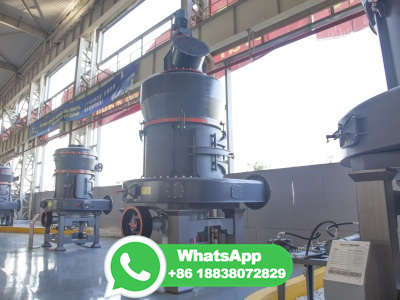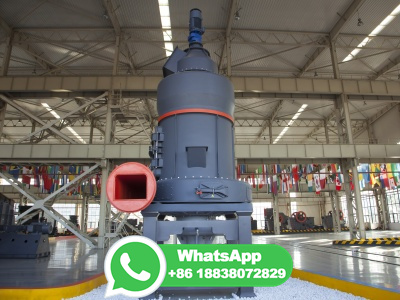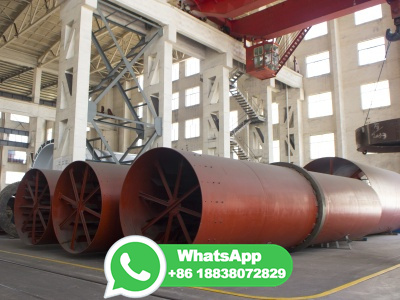
In 2022, coal accounted for about % of electricity generation. Coal use by industry. Many industries use coal and coal byproducts. The concrete and paper industries burn large amounts of coal to produce heat. The steel industry uses coal indirectly as coal coke to smelt iron ore into iron to make steel. The high temperatures created by ...
WhatsApp: +86 18838072829
Coal is a combustible black or brownishblack sedimentary rock, formed as rock strata called coal is mostly carbon with variable amounts of other elements, chiefly hydrogen, sulfur, oxygen, and nitrogen. Coal is a type of fossil fuel, formed when dead plant matter decays into peat and is converted into coal by the heat and pressure of deep burial over millions of years.
WhatsApp: +86 18838072829
As shown in Fig. 1, the coking process is needed to convert coal into the valuable fuel product of coal coke, and it is more suitable for cast iron in a cupola furnace . During this process, the coal softens as the temperature rises, then it melts and solidifies again to turn into coal coke, which has sufficiently high strength for charging ...
WhatsApp: +86 18838072829
From mining ores to smelting to tempering alloys, the process is energy intensive, and engineers have chased improvements about as long as steel has topped axes, formed armor and driven machinery.
WhatsApp: +86 18838072829
1. When coal is heated to a certain temperature while cutting out air supply, it turns into a residue of solid carbonaceous form known as coke. 2. The nature of the residue depends on the temperature at which the coal is heated. Generally it is hightemperature carbonization which helps convert coal to coke.
WhatsApp: +86 18838072829
Semantic Scholar extracted view of "Highly efficient carbon utilization of coaltomethanol process integrated with chemical looping hydrogen and air separation technology: Process modeling and parameter optimization" by D. Xiang et al. ... Highly flexible and energyefficient process for converting cokeoven gas and pulverized coke into ...
WhatsApp: +86 18838072829
In industrial chemistry, coal gasification is the process of producing syngas —a mixture consisting primarily of carbon monoxide (CO), hydrogen ( H2 ), carbon dioxide ( CO2 ), methane ( CH4 ), and water vapour ( H2O )—from coal and water, air and/or oxygen. Historically, coal was gasified to produce coal gas, also known as "town gas".
WhatsApp: +86 18838072829
1. Introduction. As the world's largest coke producing country, China produces approximately 471 million tons of coke, and the production of cokeoven gas (COG), a byproduct of the coaltocoke conversion process, is nearly 210 billion m 3 [1, 2].COG is a hydrogenrich gas containing H 2 (5860 vol%), CH 4 (2327 vol%), CO (58 vol%), and CO 2 (<3 vol%) and is a valuable raw material ...
WhatsApp: +86 18838072829
Coke is produced in the coking ovens and is then used with limestone to extract iron metal from ironcontaining ores in the blast furnace. Coke is a form of almostpure carbon that is produced from coal rocks. It is produced by heating coal rocks to a high temperature in a coking oven.
WhatsApp: +86 18838072829
Britain In 1589, a patent was granted to Thomas Proctor and William Peterson for making iron and steel and melting lead with "earthcoal, seacoal, turf, and peat". The patent contains a distinct allusion to the preparation of coal by "cooking".
WhatsApp: +86 18838072829
According to the use, coke is classified into metallurgical coke, such as blast furnace coke, foundry and ferroalloy coke, gasification coke, and tourmaline for chemical engineering. The production output of coking coal in 2020 was 485 Mtce, accounting for 12% of total coal production in 2020, as shown in Table Table
WhatsApp: +86 18838072829
The purpose of coal conversion is the production of alternative fuels, including motor fuels, or the generation of a range of chemicals from coal by process routes, such as gasification, direct and indirect liquefaction, hydropyrolysis, and plasmapyrolysis. The application of these techniques is essential if the large reserves of coal are to be ...
WhatsApp: +86 18838072829
Coal carbonization is a process that yields metallurgical coke for use in ironmaking blast furnaces and other metalsmelting proc esses. Carbonization entails heating the coal to temperatures as high as 1300 °C in the absence of oxygen to distill out tars and light oils.
WhatsApp: +86 18838072829
Chemicals from Coking Metallurgical Coal. Most of the chemicals derived from coal come from byproducts produced during the coking process. Coal is used to make coke to make steel. Coke gas (also called foul gas) contains coke tars, ammonia, and light oils. Tars are recovered and used to make tar derivatives. Ammonia is recovered as an aqueous ...
WhatsApp: +86 18838072829
Coal liquefaction is a process of converting coal into liquid hydrocarbons: liquid fuels and petrochemicals. This process is often known as "Coal to X" or "Carbon to X", where X can be many different hydrocarbonbased products. ... However, any produced liquids are mostly a byproduct and the main product is semicoke a solid and smokeless ...
WhatsApp: +86 18838072829
Introduction. As the world's largest coke producing country, China produces approximately 471 million tons of coke, and the production of cokeoven gas (COG), a byproduct of the coaltocoke conversion process, is nearly 210 billion m 3 [1,2]. COG is a hydrogenrich gas containing H 2 (5860 vol%), CH 4 (2327 vol%), CO (58 vol%), and CO 2 (<3 vol%) and is a valuable raw material for ...
WhatsApp: +86 18838072829
Abstract. Development of renewable energy is essential to mitigating the fossil fuel shortage and climate change issues. Here, we propose to produce a new type of energy, biocoal, via a fast pyrolysis coupled with atmospheric distillation process. The high heating values of the asprepared biocoals from the representative biomass are within ...
WhatsApp: +86 18838072829
The recovery of coal chemicals is an economical necessity, as they equal approximately 35 percent of the value of the coal. To produce quality metallurgical coke, a hightemperature carbonization process is used. Hightemperature carbonization, which takes place above 900°C (1650°F), involves chemical conversion of coal into a mostly gaseous ...
WhatsApp: +86 18838072829
Metallurgical coal or coking coal [1] is a grade of coal that can be used to produce goodquality coke. Coke is an essential fuel and reactant in the blast furnace process for primary steelmaking. [2] [3] [4] The demand for metallurgical coal is highly coupled to the demand for steel. Primary steelmaking companies often have a division that ...
WhatsApp: +86 18838072829
Cokes from different coal blends have different contents of anisotropic shapes, to > μm in size, arising from the heterogeneous nature of the plastic (fluid) phase of carbonization from which the liquid crystal structures develop. Classifications of anisotropy are listed.
WhatsApp: +86 18838072829
For coalbased system, as shown in Fig. 5, coal is transformed into syngas via gasifier, and with a series of processes, constituents of syngas are adjusted to match the stoichiometric ratio of methanol synthesis as fresh gas. In methanol synthesis process, unreacted syngas out of synthesis reactor is totally recycled into the reactor.
WhatsApp: +86 18838072829
Coke. Coke (coal): A solid carbonaceous residue derived from lowash, lowsulfur bituminous coal from which the volatile constituents are driven off by baking in an oven at temperatures as high as 2,000 degrees Fahrenheit so that the fixed carbon and residual ash are fused is used as a fuel and as a reducing agent in smelting iron ore in a blast furnace.
WhatsApp: +86 18838072829
This paper focuses on the best way to produce methanol by Coke Oven Gas (COG) conversion and by carbon dioxide capture. The COG, produced in steelworks and coking plants, is an interesting source of hydrogen that can be used to hydrogenate carbon dioxide, recovered from flue gases, into methanol. The architecture of the reuse process is developed and the different process units are compared by ...
WhatsApp: +86 18838072829
Turning coal into coke, a raw material used in steelmaking, is a complicated and dangerous process, as evidenced by the explosion Wednesday that injured 20 people at the country's largest coke plant. But those familiar with the industry say it can be done safely.
WhatsApp: +86 18838072829
The efficient conversion of cokeoven gas (COG), an abundant byproduct in steel production, into addedvalue chemicals such as methanol is a highly desired technological process. ... The cofeeding of cokeoven gas with coal not only can reduce the CO2 emissions of coaltonatural gas process, but also helps to reduce the CO2 emissions of ...
WhatsApp: +86 18838072829
The indirect route is composed of 2 steps: First, coal is gasified with steam and oxygen to produce a synthesis gas (syngas), which is then cleaned to rid of dust, tar, and acid gases. The second step reacts the synthesis gas with a catalyst in the FischerTropsch process, which converts the syngas into a range of hydrocarbon fuels such as ...
WhatsApp: +86 18838072829
Honeywell. An advanced and remodeled plant could scrub the mercury, nitrogen oxide, and sulfur dioxide before it would separate the remaining byproducts: carbon dioxide, carbon monoxide, and ...
WhatsApp: +86 18838072829
Coke is dense, black and has high carbon content, lending to its high calorific value about 6,000 BTU per pound. Coal is a good fuel as it produces a lot of heat when burned. It has a calorific value of around 3,8005,500 BTU per pound. Coke contains a higher ash content than coal, which makes it less valuable as a consumer product.
WhatsApp: +86 18838072829
In order to convert coal to graphite, first coal is digested (bituminous coal only) ... The side doors are installed again and the process repeated. Coke batteries are operated nearly contmuously to remain productive over their life span of 20 to 30 years. Petroleum cokes, on the other hand, represent the second largest source of consumable ...
WhatsApp: +86 18838072829
The Coking Process of Coal in the Oven Chamber When coal is charged into a hot coke oven, that portion of the coal directly in contact with the walls is heated very rapidly. When its fusing is reached, the thin layer of heated coal softens and fuses. Destructivedistillation reactions proceed rapidly in the plastic
WhatsApp: +86 18838072829
During this process, it softens, then liquefies, and resolidifies into a hard porous material called "coke". This is not the cola soft drink. Coke is a porous, carbonrich material used to make steel. The coke is mixed with iron ore and limestone to make molten iron, which is then further treated and heated to make steel.
WhatsApp: +86 18838072829
The direct reduction demonstration plant enables us to optimize the reduction process and how it interacts with the other process steps. Through this work, we are creating the basis for sustainable steel production with low CO 2 emissions." The company aims to convert a third of its steel production to the climatefriendly process with ...
WhatsApp: +86 18838072829